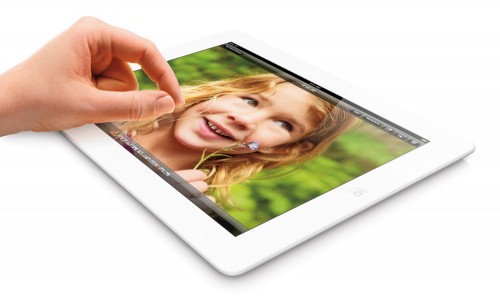Released last September 2013, the Huawei MediaPad 10 Link wishes to be your all-around Android tablet for media consumption and light work with its 10-inch screen and quad-core CPU. So how does the tablet fair? Check out the review after the break.

Design and Construction
First thing you’ll notice about this tablet is its aluminum back plate. It feels pleasant to hold and it adds a premium feel. Though the tablet feels heavy, it’s reasonable enough for a 10-inch tablet. The upper portion of the back is polycarbonate to avoid radio interference.

The whole front is occupied by the VGA front-facing camera and the 10.1-inch IPS panel with a plastic rim. The left side of the device is composed of the micro-USB port and 3.5mm headset jack while the covered mini SIM card and microSD card slot is on top.

Going to right side reveals the the power/lock button and volume rocker. The bottom of the device is clean from any ports. The behind of the tablet houses the 3-megapixel camera and the rear-blasting stereo speakers.

The tablet is well-built but it doesn’t lure away from the conventional tablet designs we already have while the rear of the device is not that desirable in terms of appeal.
Display
The resolution of the device is 1280 × 800 pixels stretched to fit a 10.1-inch IPS LCD panel. It’s already 2013 and displays like these are disappointing in terms of sharpness. Fine text are relatively a pain to read but most webpages are readable.

In terms of color and saturation, the IPS panel is doing great. Viewing angles are wide with no visible color-shifting. We find the display to be okay, it’s just the screen resolution that takes away its greatness.
OS, UI and Apps
Huawei has modified the Android UI just like what they do with their smartphones. The fact that this is still running Android Jellybean 4.1.2 is disappointing. Even local tablets and smartphones are with Jellybean 4.2.2.

The tablet doesn’t seem to indicate if this is running Emotion UI but they look identical. Like iOS, there is no app drawer. The homescreen contains all your apps together with your widgets. Folders can also be created for organization. Another noticeable change is the keyboard. Instead of a dark-themed keyboard, you get a white Huawei keyboard for typing with dictionary input.

It also has some homebaked apps like a notepad, a voice recorder and a DLNA app for content sharing. There is also Riptide GP pre-installed for gaming out of the box. Dolby Mobile is also on-board for improved audio production.
Performance
In terms of performance, the MediaPad Link 10 performs well as a midrange tablet. Huawei’s own 1.2GHz quad-core CPU and the 16-core GPU can handle fluid UI navigation, regular tasks, and some casual gaming like the old but still capable Riptide GP. Intensive games like Dead Trigger 2 has a lot of skip frames when in high quality setting.

We also did our usual Benchmark tests and the scores are:
NenaMark 2 – 57.9 FPS
Quadrant – 4487
Antutu 4 - 14717
Vellamo – 1439 (HTML5); 409 (Metal)
Camera and Multimedia
With a 3MP fixed-focus rear camera and a VGA front-facing camera, you’ll probably use it only for video-chatting. Quality of the front-facing camera is bad due to the resolution while the rear camera was able to deliver some decent images for a tablet despite the low resolution.
Check out the sample photo:

What is great about this tablet are the speakers. They’re loud and clear. The Dolby Mobile enhancements deliver. Though the speaker placement is at the back which could be better if it’s in front.

It can handle 1080p videos without hiccups and with the inclusion of a microSD card slot, the MediaPad 10 Link can be your movie buddy.
Connectivity and Battery
It comes with a mini SIM card slot for cellular connectivity. It can handle HSPA+ but unfortunately we were not able to achieve such high speeds. There is no support for cellular calls but there is the SMS feature. Lastly, the usual suspects are on board like WiFi b/g/n, Bluetooth 3.0 and GPS with aGPS support.

The tablet was able to last for more than 5 hours with our usual battery test which involves playing a video file on loop.
Conclusion
Overall, the Huawei MediaPad 10 Link with its aluminum back plate and superb speakers performed pretty well as a mid-range tablet. However, with a Php16,990 price tag, it will be a tough sell.
Huawei MediaPad 10 Link specifications:
10.1-inch IPS LCD display @ 1280×800 pixels
Huawei K3V2 ARM Cortex-A9 1.2GHz quad-core processor
HiSilicon Immersion 16-core Graphics
1GB RAM
16GB internal storage
up to 32GB via microSD
DC-HSPA+ 42Mbps DL / 5.76Mbps UL
WiFi 802.11 b/g/n
Bluetooth 3.0
Dolby Digital+ Surround Sound
GPS with aGPS support
3MP rear camera
VGA front-facing camera
Li-Po 6600mAh battery
Android 4.1 Jellybean
257.4 × 175.9 × 9.9mm (dimensions)
620 grams (weight)
What we liked about it:
- Decent screen quality
- Amazing speakers
- Aluminum back plate
What we don’t like:
- Low pixel density
- Low camera resolution
- Hefty
The post Huawei MediaPad 10 Link Review appeared first on YugaTech | Philippines, Tech News & Reviews.















